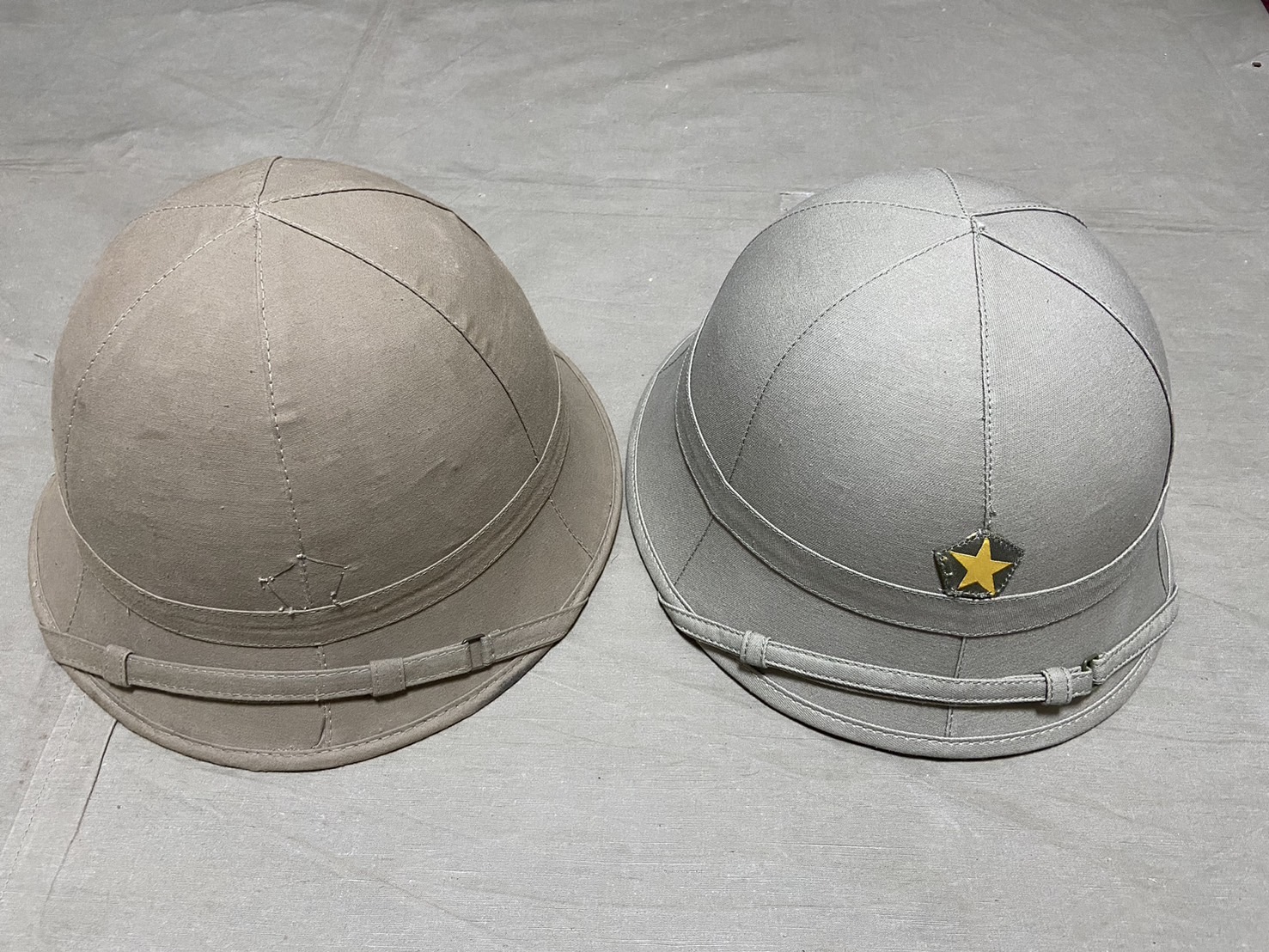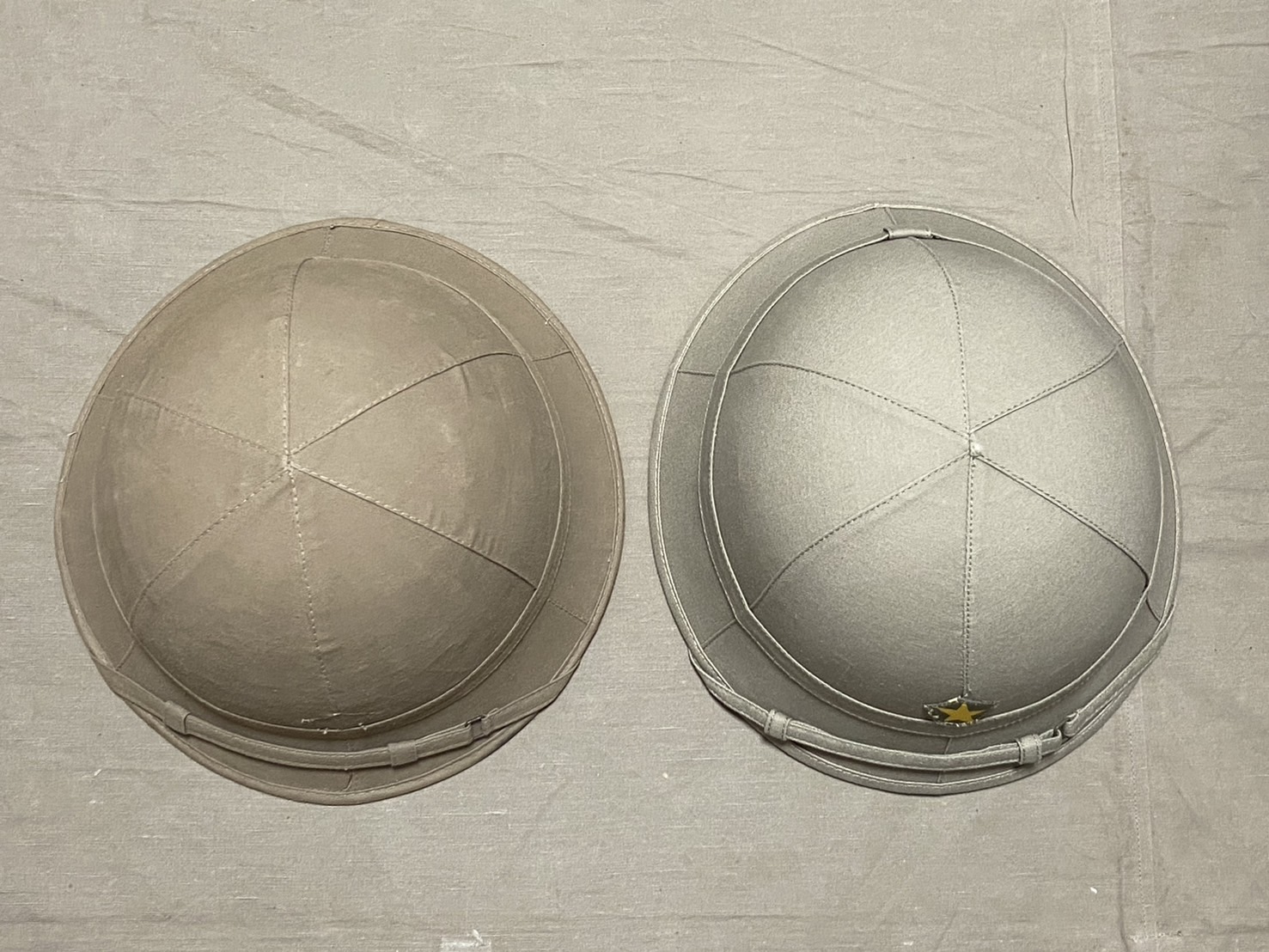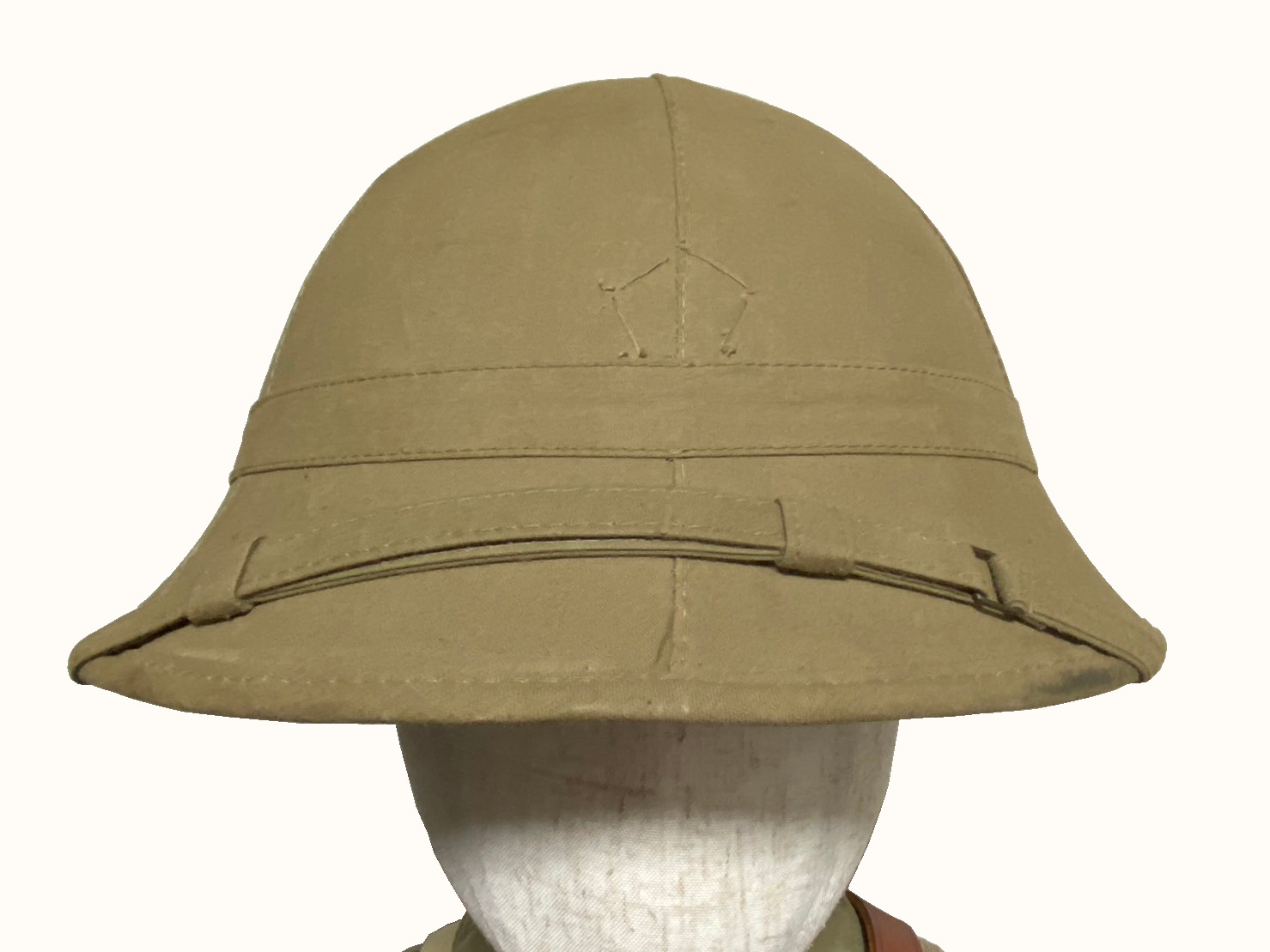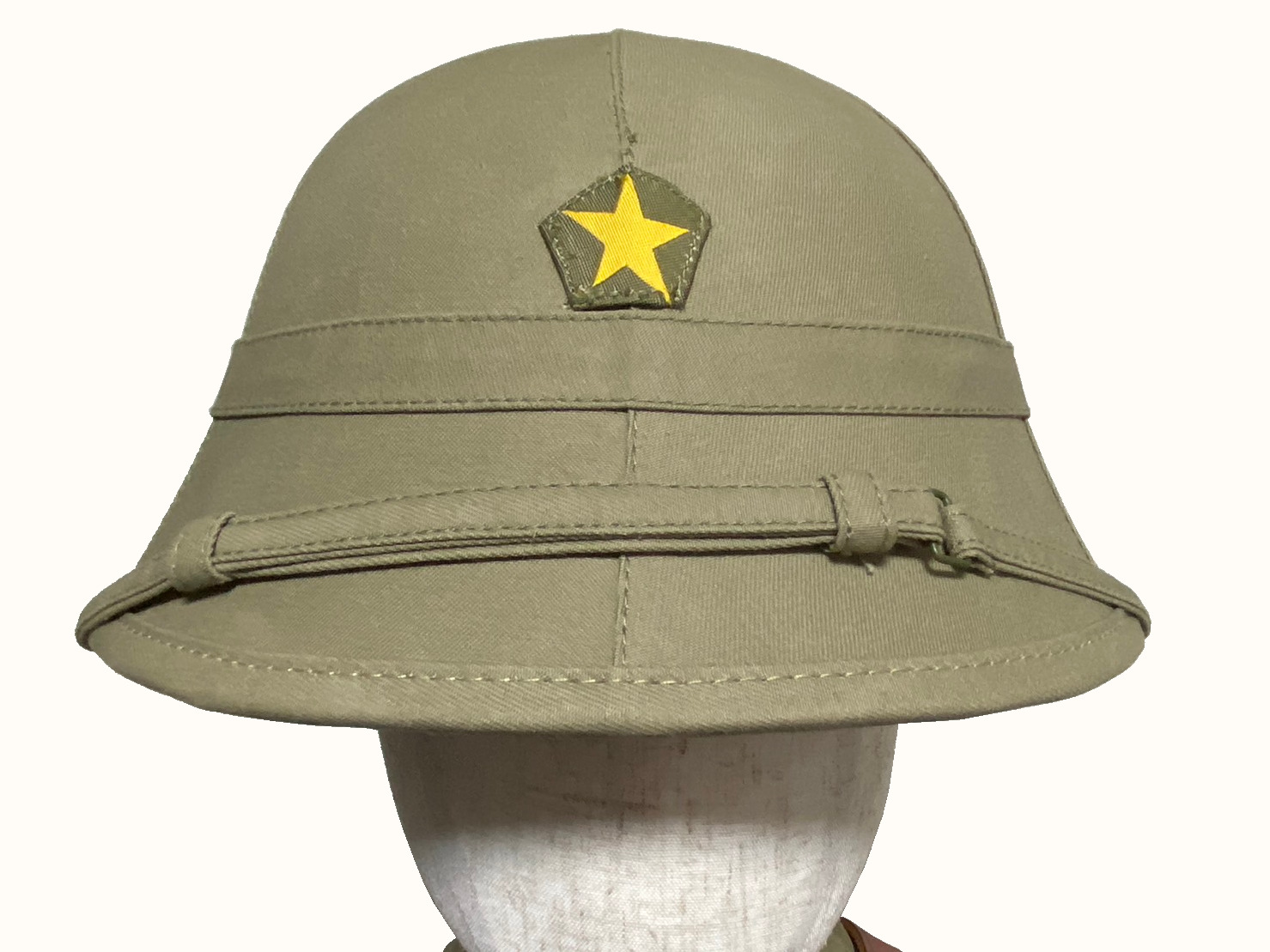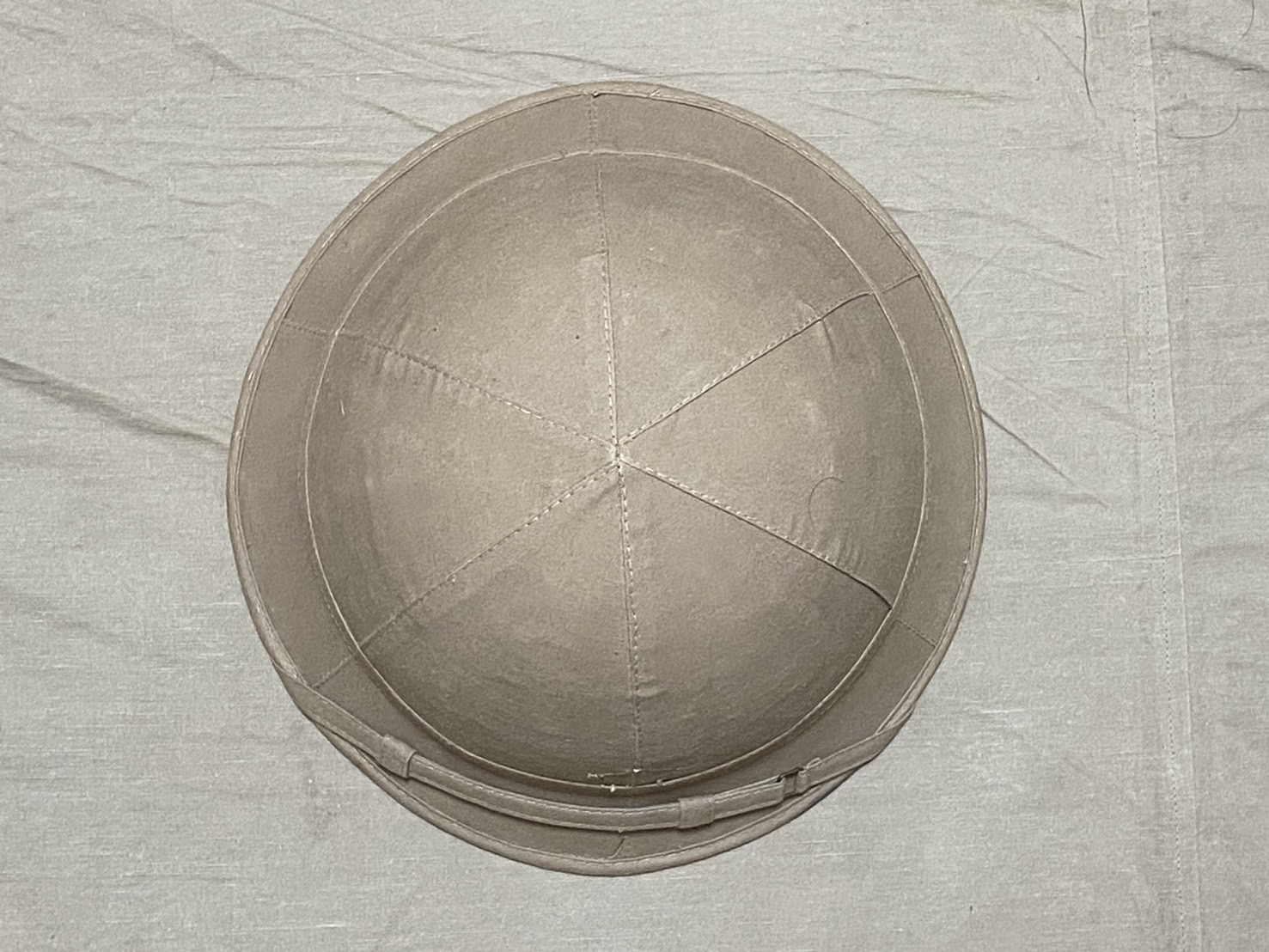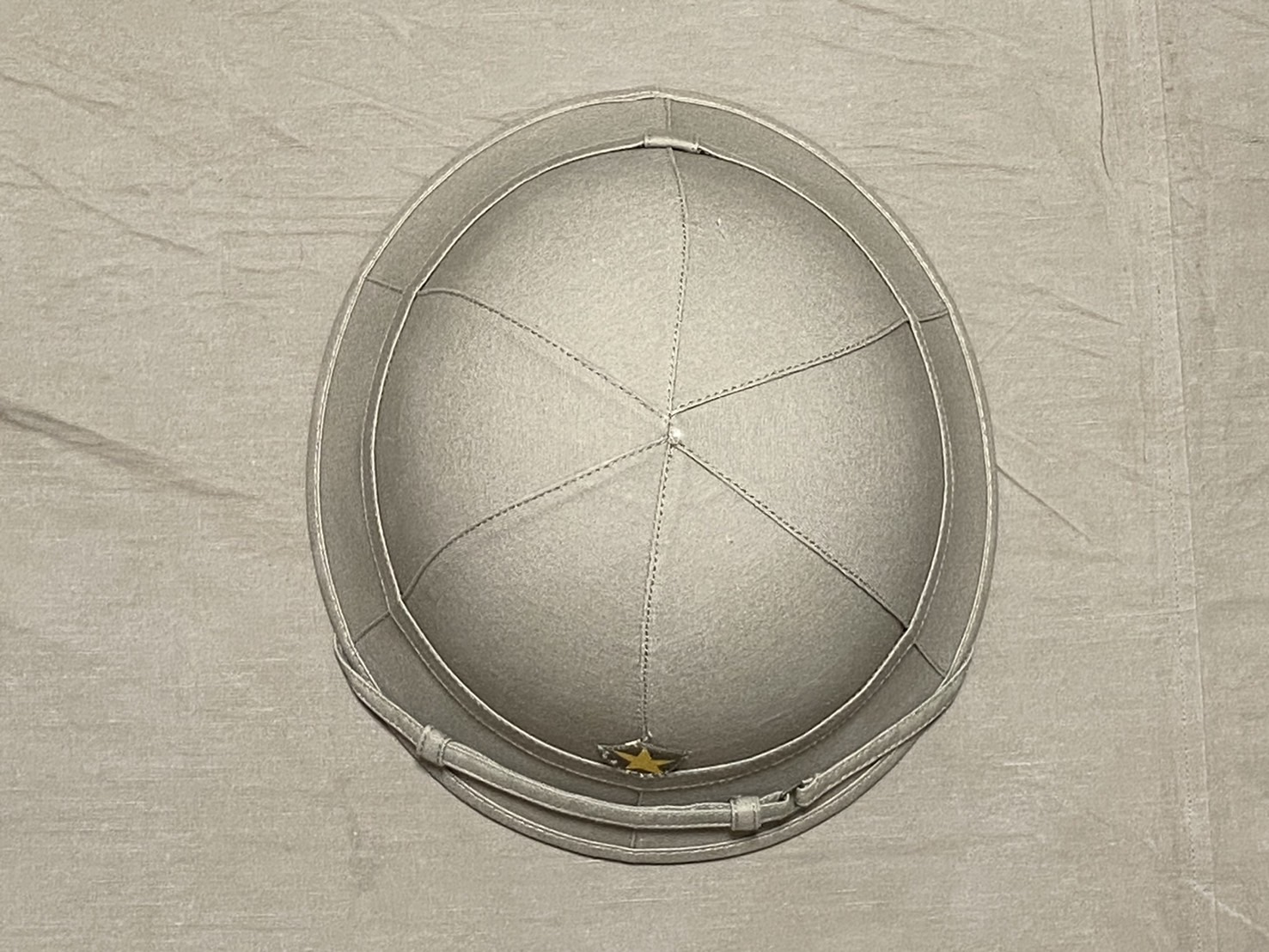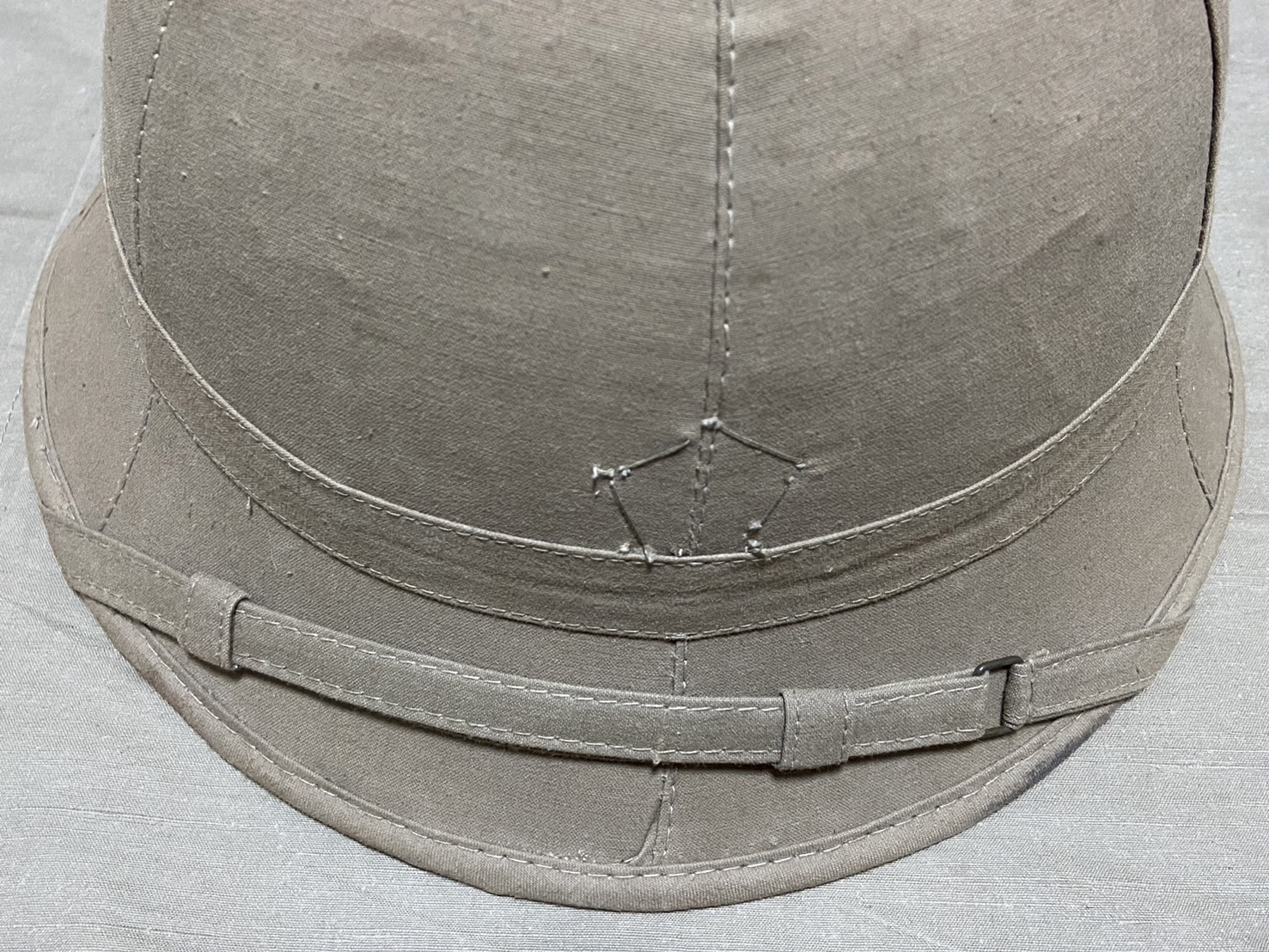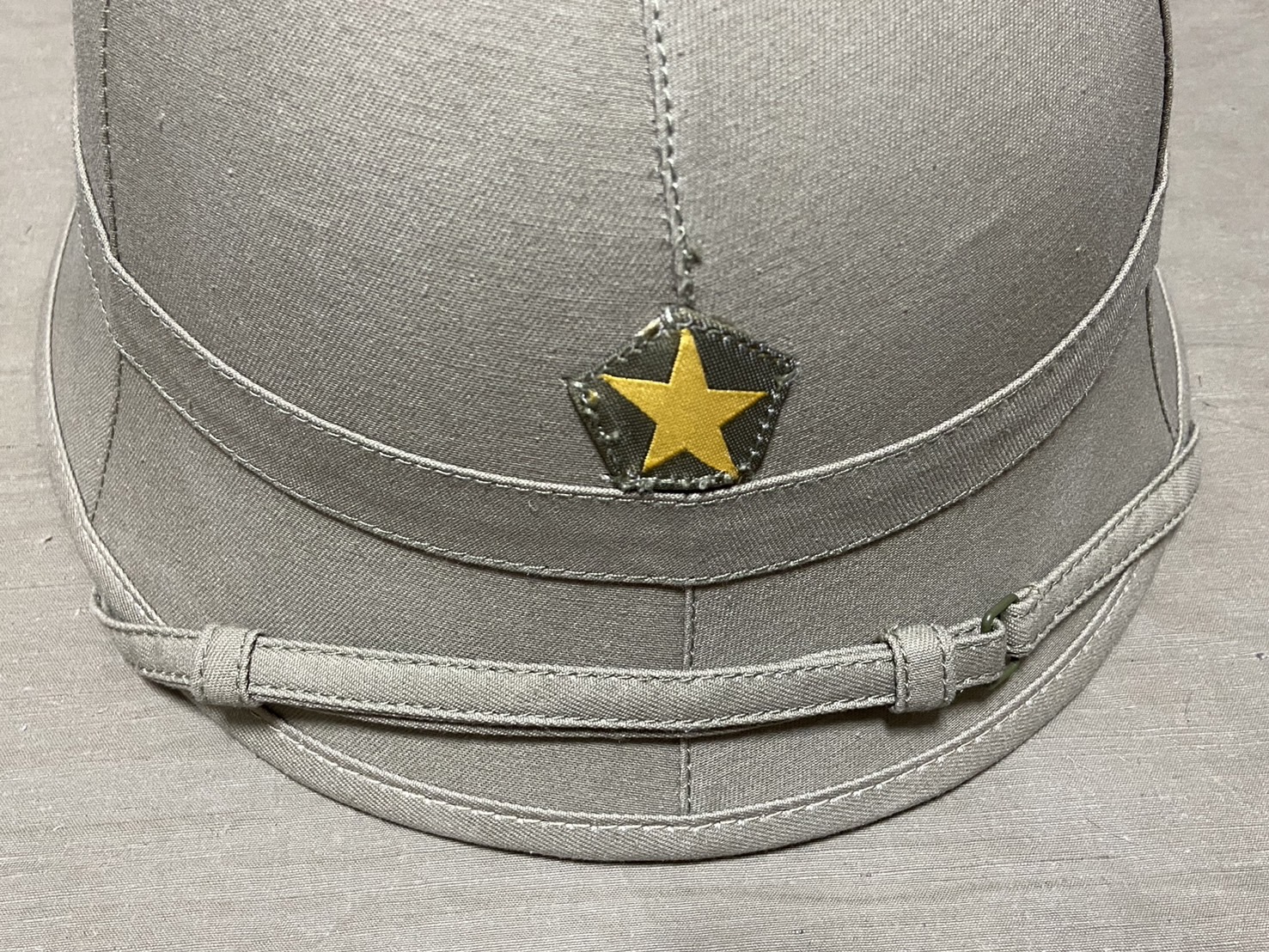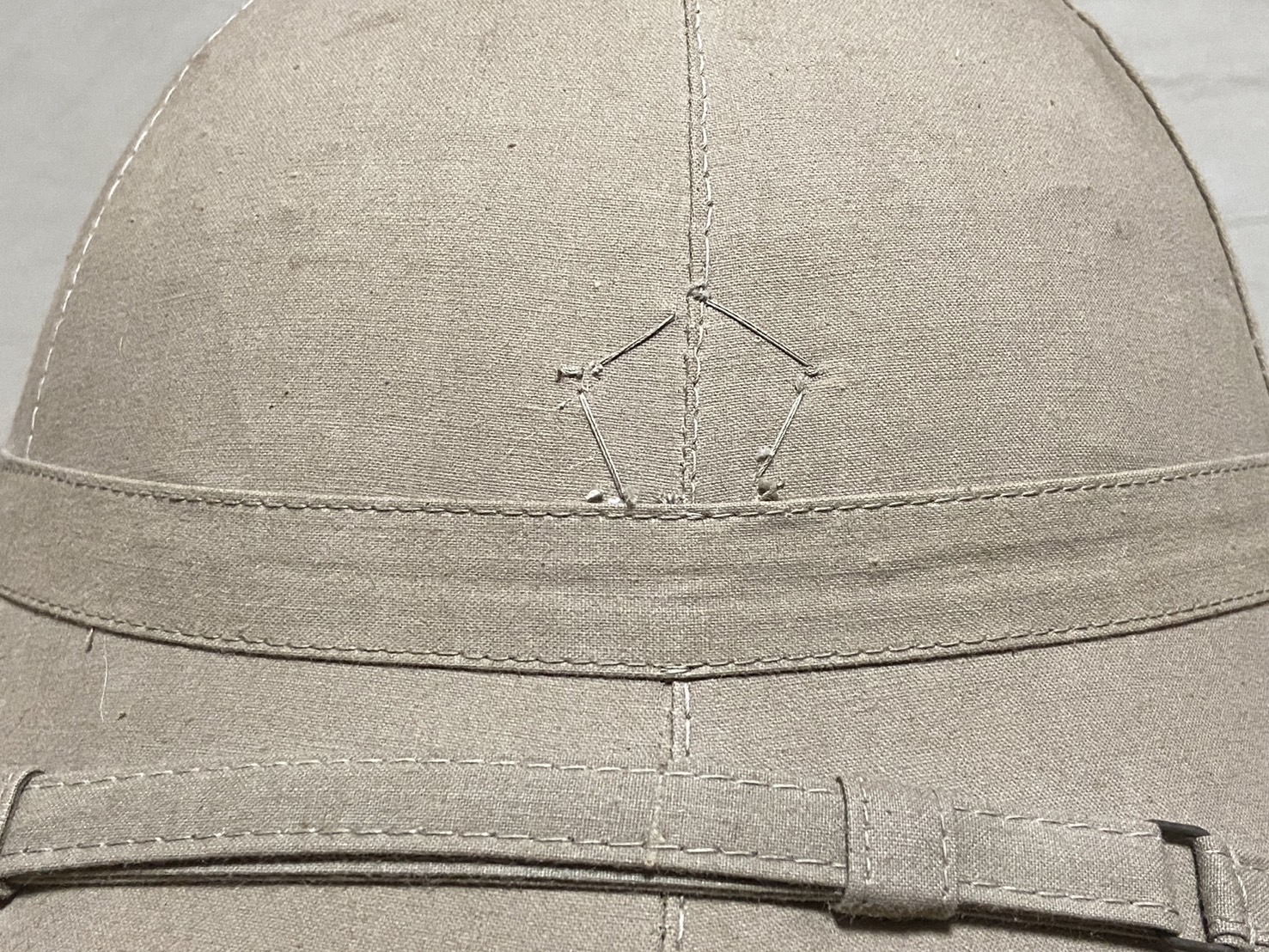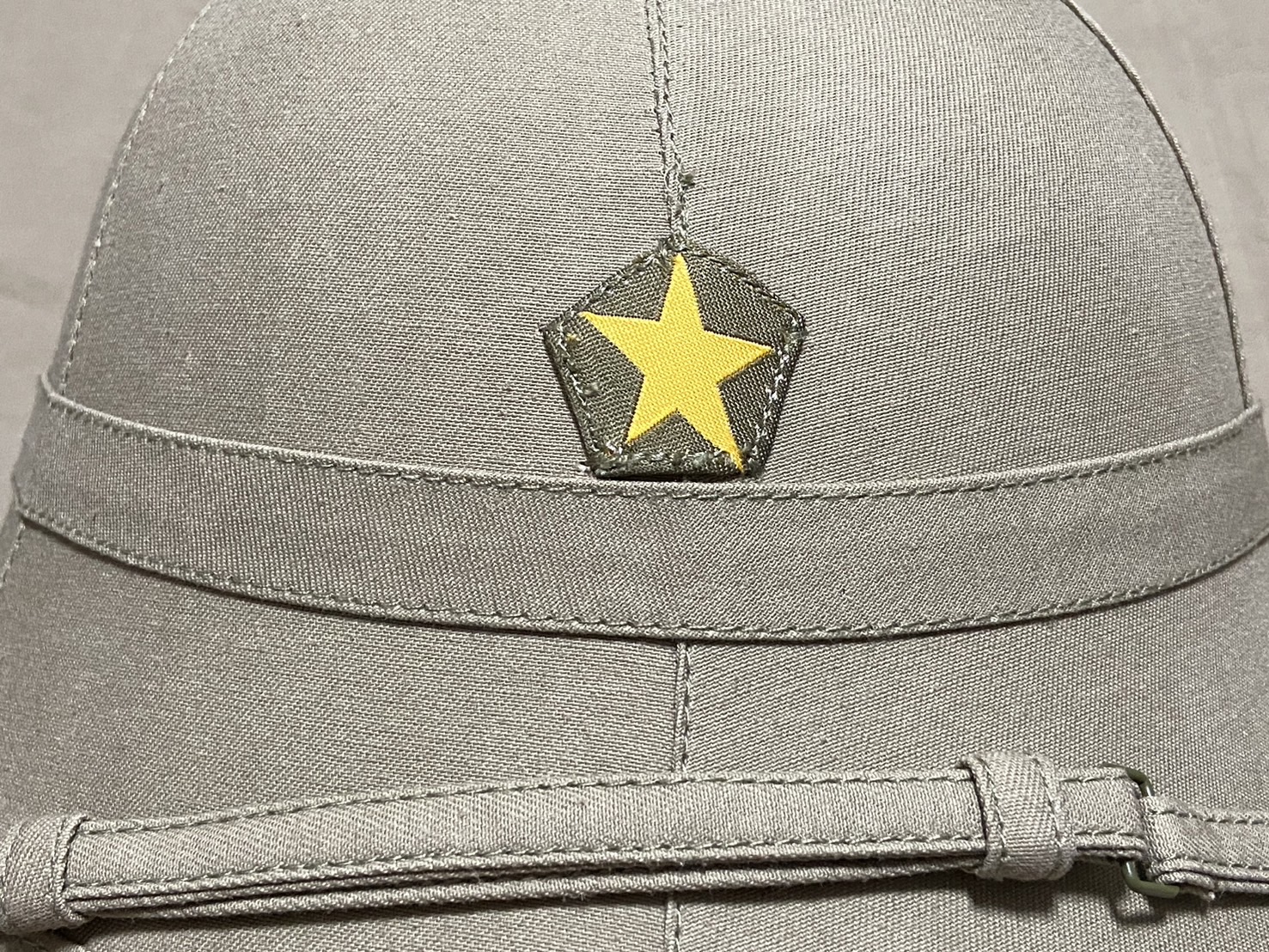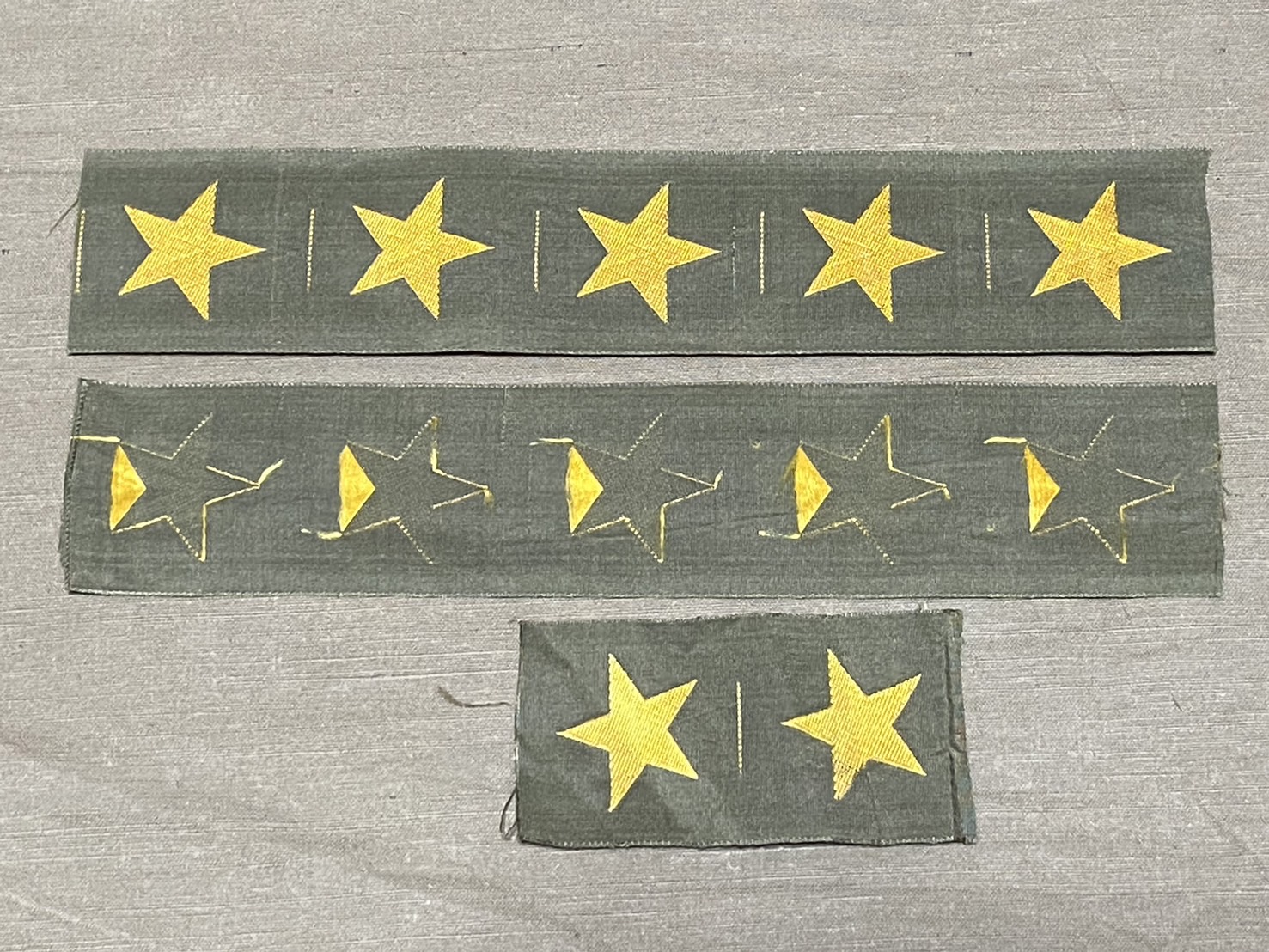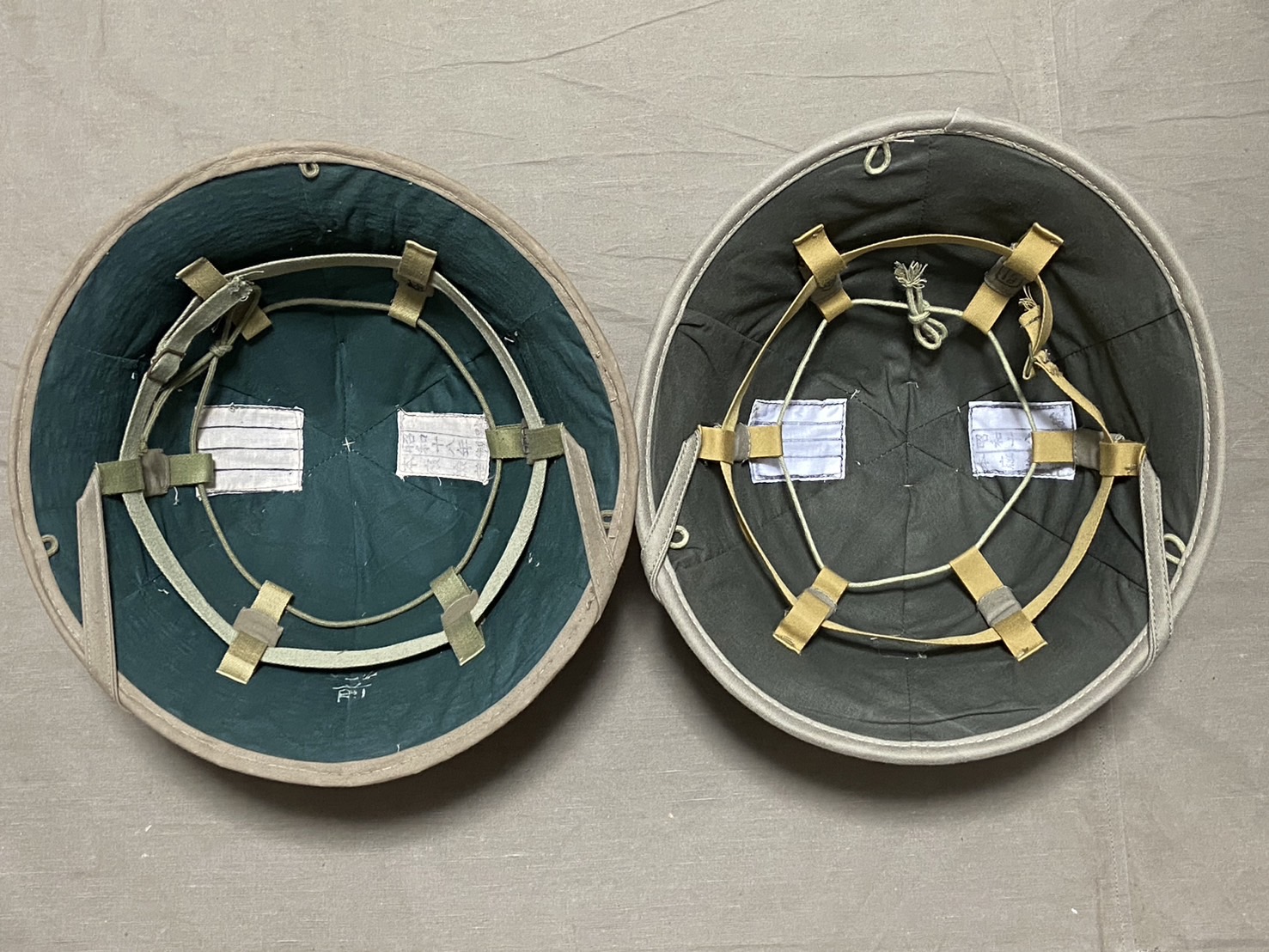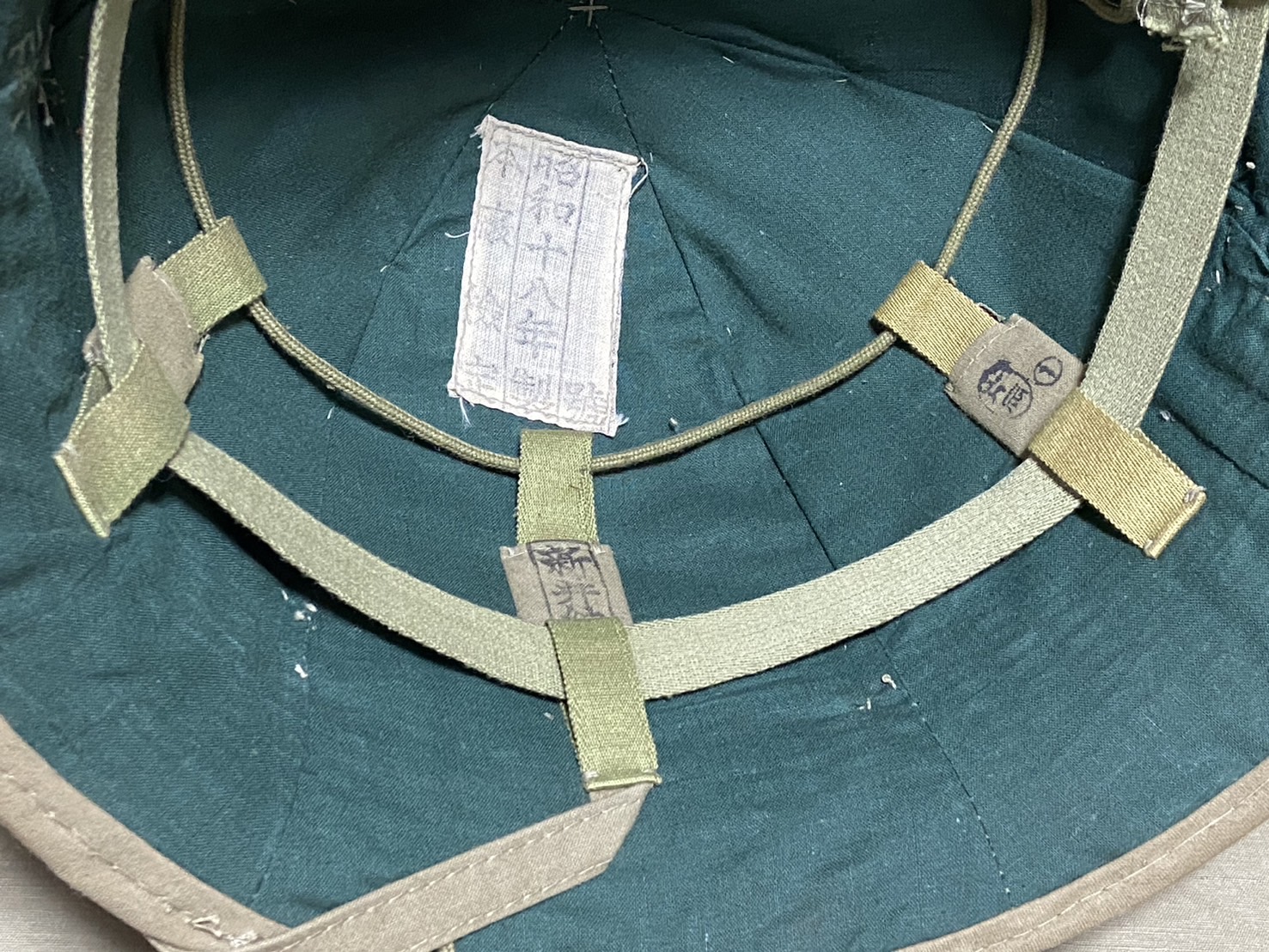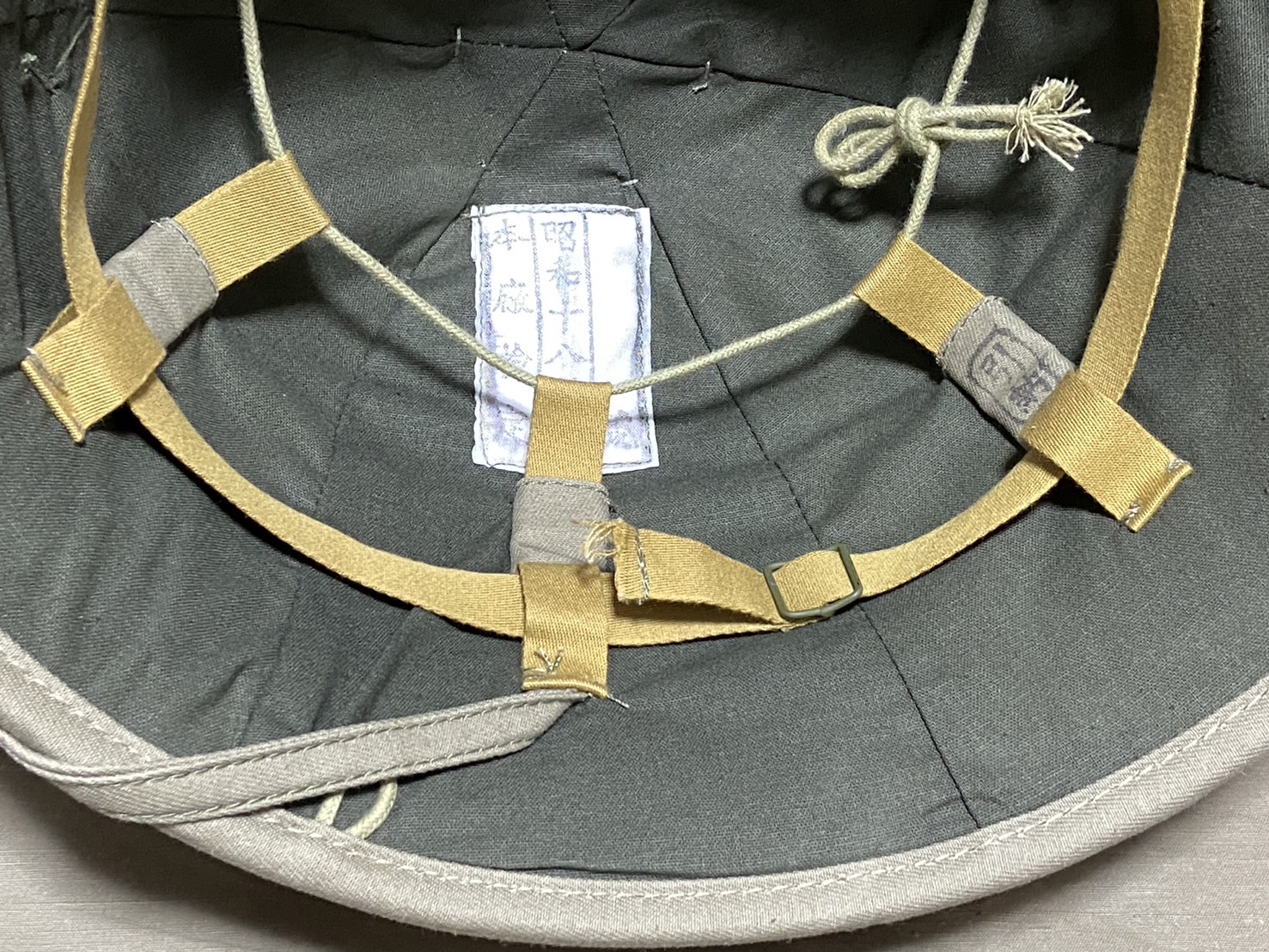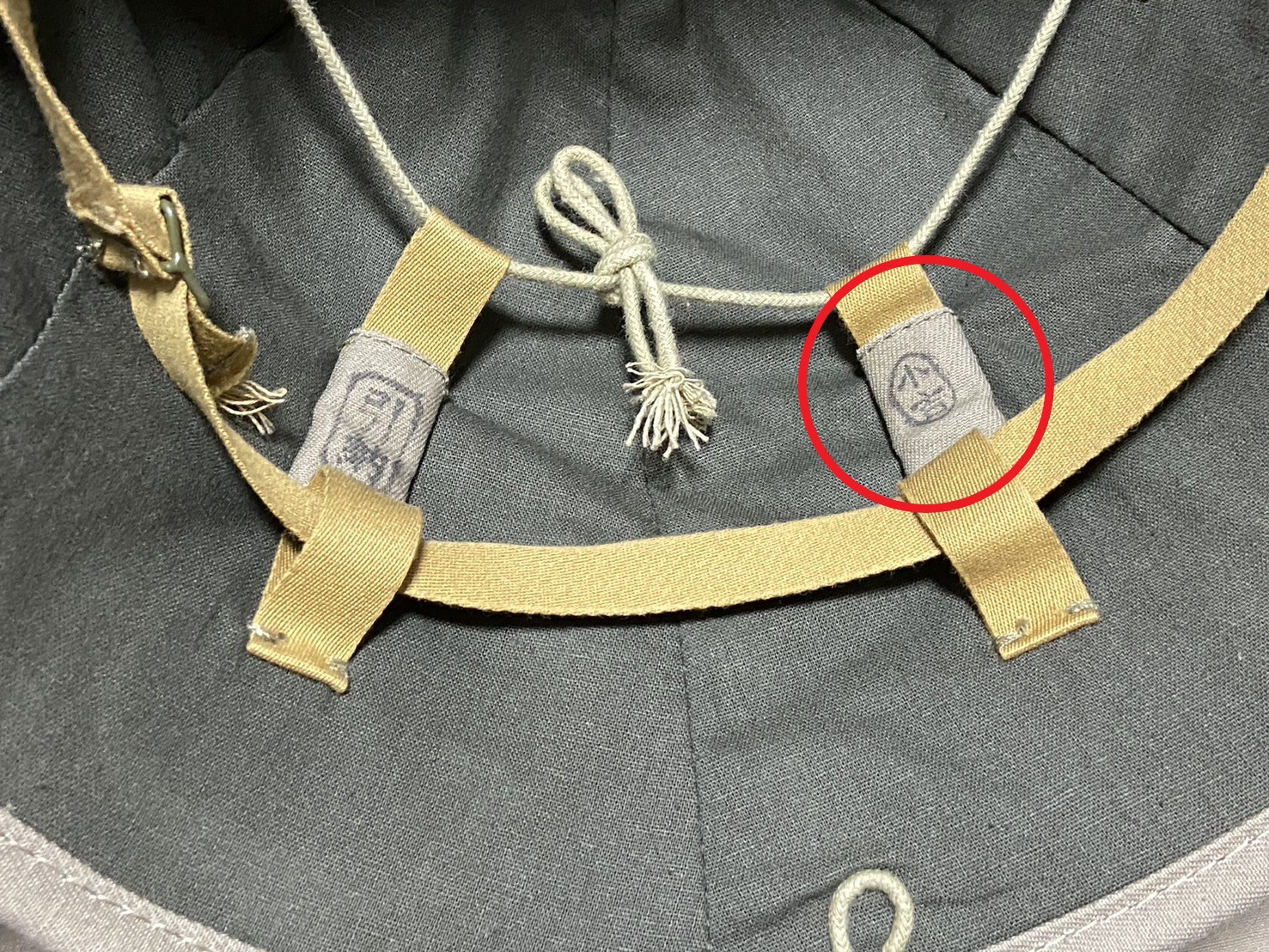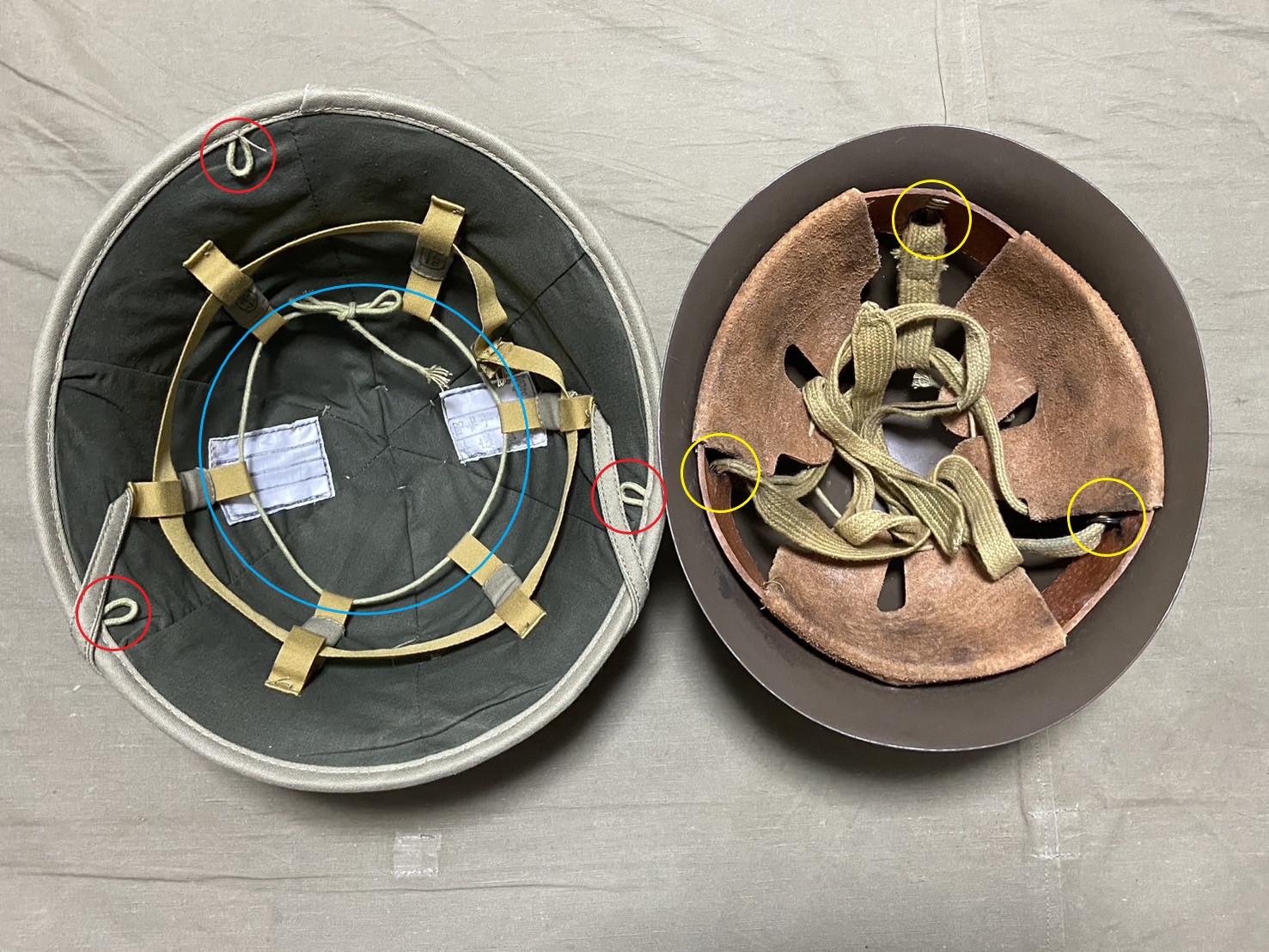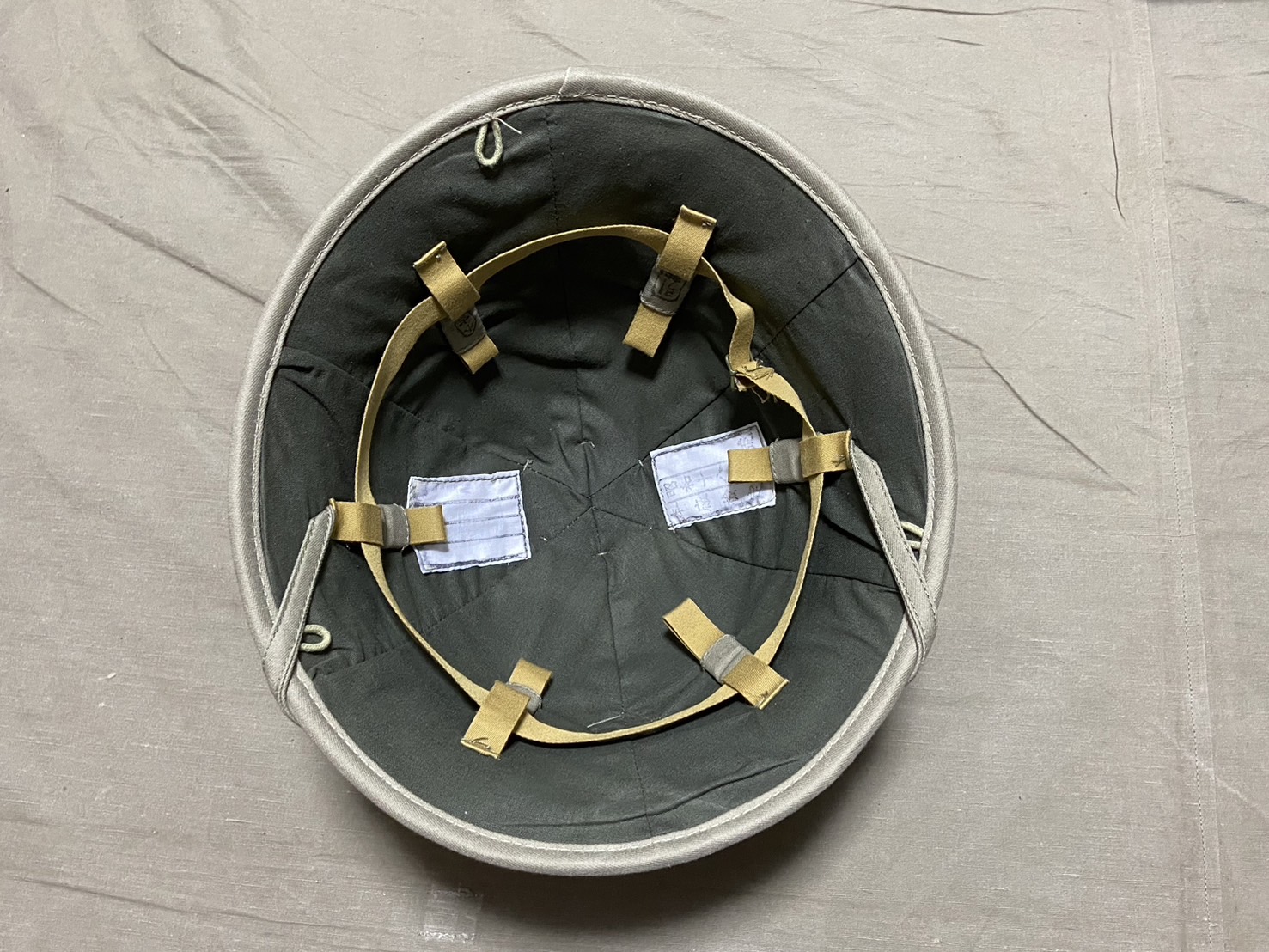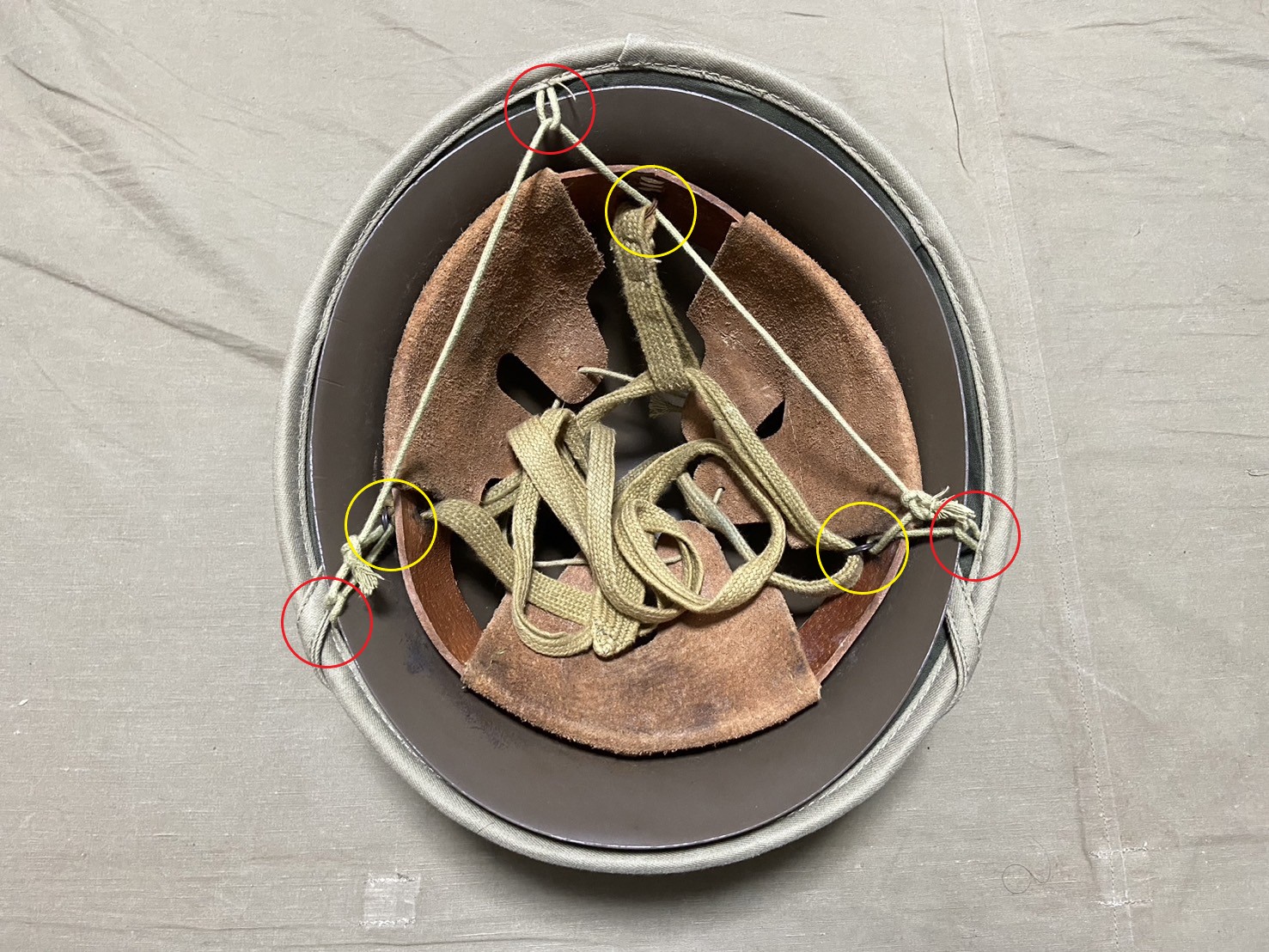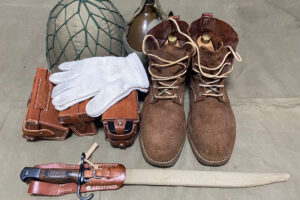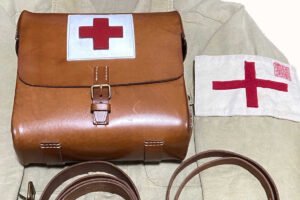This time, I’m comparing the Type 98 Sun Hat with the HIKISHOP replica. The authentic Type 98 Sun Hats occasionally appear on Yahoo Auctions, usually trading for around 30,000 to 50,000 yen.
The Sun Hat has early and late models. The version established in 1930 (Showa 5)1 featured a metal star insignia and had ventilation holes at the top and on both sides. The one I’m introducing this time is the Sun Hat revised in 1941 (Showa 16)2, where the metal star insignia was replaced with a woven yellow star, and the ventilation holes were removed. Below is an excerpt from historical documents.
- Established in Showa 5 (1930)
- Materials:
- Waterproof fabric in blue-brown color.
- Hat body is Made of felt or “林桃”3.
- Specifications:
- Equipped with a metal star insignia.
- Ventilation holes on the top, both sides, and inside.
- Includes size adjustment components inside the hat.
- Materials:
- Revised in Showa 16 (1941)
- In the section on tropical caps for special regions, the phrase “equipped with a metal star insignia” was changed to “equipped with a woven yellow star insignia,” and “ventilation holes on the top” was removed.
The Sun Hat introduced in this article features a woven star insignia and lacks ventilation holes, so it corresponds to the type revised in Showa 16 (1941).
In my interpretation, the term “Type 98” was used to refer to the later model of the Sun Hat, which had been updated with woven star insignia and had its ventilation holes removed.
Comparison of Authentic and Replica
Appearance
First, I will compare the authentic item with the replica. In the following photos, the item on the left is the authentic, and the one on the right is the HIKISHOP replica.
First, there is a difference in color. The HIKISHOP replica appears to use a fabric similar to that of the Type 98 Summer Tunic or the Tanker Overalls and looks slightly blue in photographs. The authentic item is described in the specifications as blue-brown waterproof fabric, and when comparing the authentic Summer Tunic with the Sun Hat, the hap seems to have a slightly stronger brownish hue.
Next is the silhouette when viewed from the front. The authentic hat has a slightly pointed top.
Here is the view from directly above. The authentic hat is perfectly round, while the replica is a slightly elongated oval shape from front to back.
The chin strap on the replica is slightly thicker and a bit narrower in width. However, this difference is only noticeable when placed side by side and closely examined.
This is a comparison of the star insignia. The authentic item had its star insignia removed, leaving only the threads where it was attached. The star on the replica is distorted. While this might be due to individual variations, the most glaring issue is that this prominent star insignia looks obviously incorrect, even to the untrained eye.
The third photo shows the woven star insignia on the authentic item. As you can see, the authentic insignia does not have any distortion.
Interior
Next, let’s compare the interiors. The inner color of the authentic item is a more vibrant green. The adjustment mechanisms inside are generally of a similar design.
Three small loops are attached along the outer perimeter, but on the replica, they are positioned rather haphazardly. I will explain the use of these small loops in the latter part of this article.
The authentic item has the character “前” (Mae/front) stamped to indicate the front side. This is also mentioned in the referenced documents discussed later.
This authentic item is from Showa 18 (1943). The replica is also modeled after the Showa 18 version. The HIKISHOP “引納” (Hiki-nō) is quite a clever touch.
It’s a small detail, but the replica is labeled with “小吉” (Small Fortune). They probably intended to write “小号” (Small Size). Japanese can indeed be tricky!
Usage of Sun Hat
The Sun Hat was used in hot battlefields such as in China and the southern regions. It was worn as a substitute for the field cap, and the internal cords were fully extended to be worn over the steel helmet. Since the steel helmet could become hot and cause heat-related illnesses when exposed to direct sunlight, the Sun Hat or helmet cover was used to prevent this.
Here is an excerpt from the August 1938 “Reference for Supply Operations in Hot Regions”4.
- The Sun Hat can be used in conjunction with the steel helmet.
When not using the Sun Hat with the steel helmet, it is recommended to cover the top with a sunshade (steel helmet cover) or foliage. During marches, placing green leaves or grass inside the helmet can also provide a cooling effect.
Attaching foliage to the steel helmet was not only recommended for camouflage but also for cooling purposes.
Additionally, the December 1941 “Reference for Hot Weather Clothing” provides detailed instructions on the use of the Sun Hat, which I will quote here.
- The Sun Hat is to be used as a substitute for the field cap. It can be worn in conjunction with the steel helmet.
- The current Sun Hat is designed to ensure a good fit with the steel helmet. It features loops along the edge of the hat, and the adjustment cord on the upper part of the hat’s cushion is removed. This allows the cord to be used to connect the loops on the hat’s edge to the inner ring of the steel helmet.
- When used in conjunction with the gas mask, the gas mask should be worn first, followed by the Sun Hat on top.
- The Sun Hat can be prone to incorrect front-and-back orientation when worn, so attention should be paid to the star emblem on the front. In current products, a “前” (Mae/front) mark is stamped on the inner front of the hat to help with proper orientation.
- The Sun Hat is essential for head protection in hot climates, so it is important to ensure it is not misused or overused.
- When necessary, attaching a neck flap to the hat can be effective in protecting the back of the head from direct sunlight.
The second point is quite interesting. While I was aware that the Sun Hat was worn over the steel helmet, I was puzzled about how it was secured since it would easily fly off otherwise. It seems that the inner round cord of the hat was removed, and the three loops on the Sun Hat were fastened to the three metal rings on the steel helmet to secure it in place.
I didn’t want to try this with an authentic Sun Hat, so I used a replica to test the attachment method. The red circles indicate the “loops,” and the blue circle marks the adjustment cord that needs to be removed and then tied to the ring on the steel helmet marked with a yellow circle. The adjustment cord on the authentic hat is considerably longer compared to the replica. This additional length is useful for this purpose.
The exact method for tying is unclear, but the cord is too short to go all the way around, and threading the cord from temple to temple would obstruct wearing the hat. Therefore, I suspect that the cord was tied in a manner similar to the diagram below. Nonetheless, the poorly placed loop cords on the replica are quite bothersome. I would like to reposition them.
Summary
This concludes the explanation of the Type 98 Sun Hat and the review of the HIKISHOP replica.
Japanese summers are so hot and humid that they might as well be tropical. Therefore, the lightweight and cool sun hat is highly recommended for summer military activities and airsoft games. Authentic sun hats are difficult to find in Japan and it’s a waste to wear them out, so despite some minor flaws, I believe the HIKISHOP replica is a valuable alternative.
Footnote
- “Regulations on Standardization of Clothing and Equipment” JACAR (Japan Center for Asian Historical Records) Ref.C01001143600, Eishon Documents, Volume 1, Showa 5 (1930) (National Institute for Defense Studies, Ministry of Defense). ↩︎
- “Showa 5 Army Directive No. 8 Amendments” JACAR (Japan Center for Asian Historical Records) Ref.C01005254100, from July 1941 onward, “Army General Affairs (China-Manchuria-Asia) Confidential File, Unit No. 9951” (National Institute for Defense Studies, Ministry of Defense). ↩︎
- It’s an evergreen tree known as “Rintō” or Pandanus, which grows in Taiwan and Okinawa. The details are unclear. ↩︎
- “Chapter 2: Precautions for Equipment” JACAR (Asia Historical Documents Center) Ref. C14010296300, “Reference for Supply Operations in Hot Regions,” August 1938 (Defense Agency Research Institute). ↩︎
